Analysing your podcast performance should be a central part of your content creation strategy. With the appropriate analytics tools, you can track how your listeners are responding to your content, which topics are popular, and how you can increase your reach. This guide will delve into the analytics provided by AnchorFM in detail, so you can gain the necessary insights to effectively evolve your podcast.
Main Insights
- The frequency of releases affects the reach of your podcast.
- Analytics provide valuable insights into the audience and their behavior.
- The location and platform of the listeners should be incorporated into your publishing strategy.
Step-by-Step Guide
Step 1: View Podcast Data
First, open the analytics page of your podcast on AnchorFM. Look at the general statistics to get an overview of the number of views, estimated listener numbers, and other relevant information. These metrics give you a first impression of the performance of your podcast.
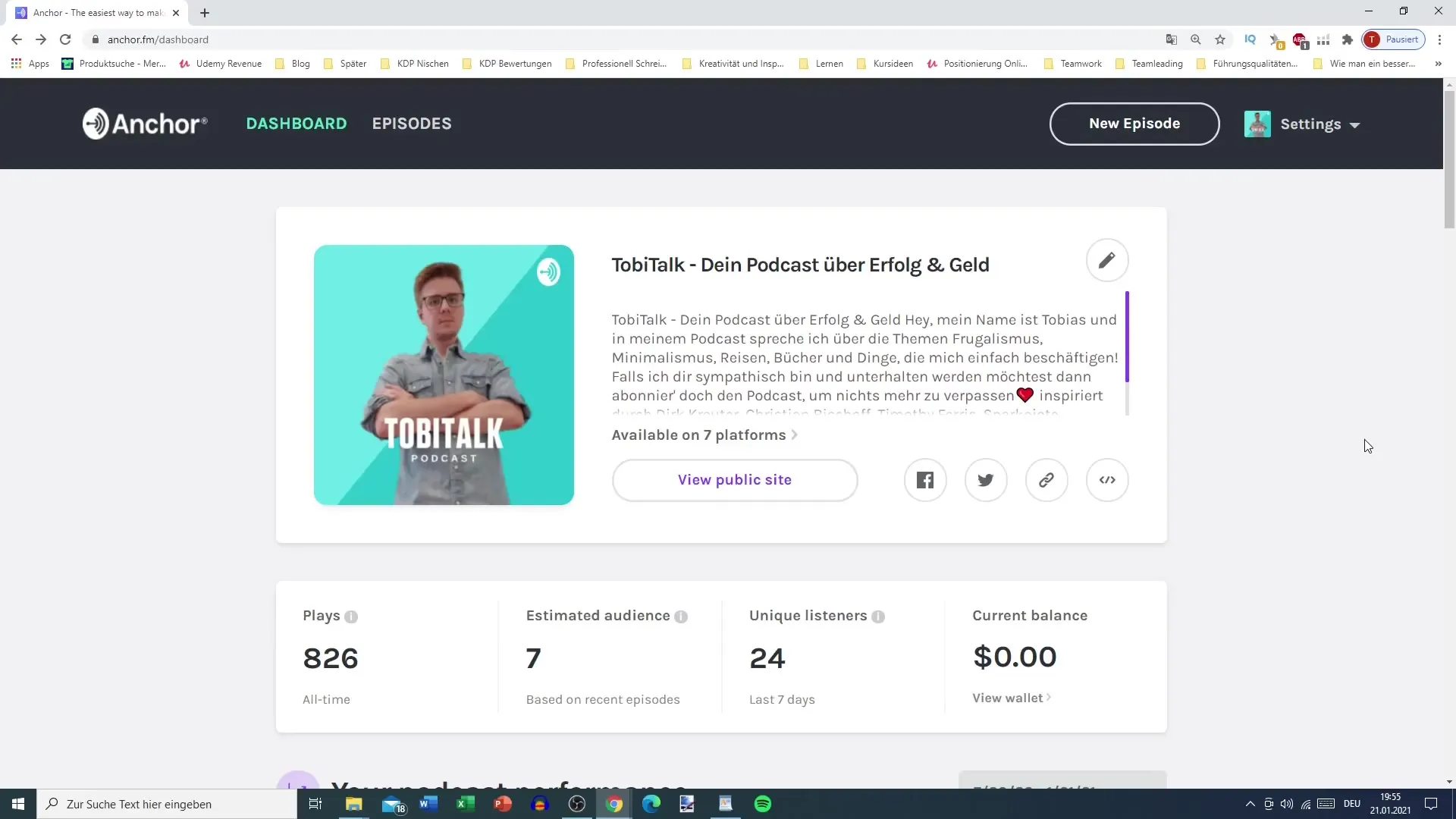
Step 2: Analyze Audience Growth Over Time
Analyze the growth of your audience over time. AnchorFM provides graphical representations showing how many plays your podcast had in different time periods. Pay attention to how the weekly or daily plays have evolved, as this gives you insight into whether there have been changes in reach and which content has been particularly successful.
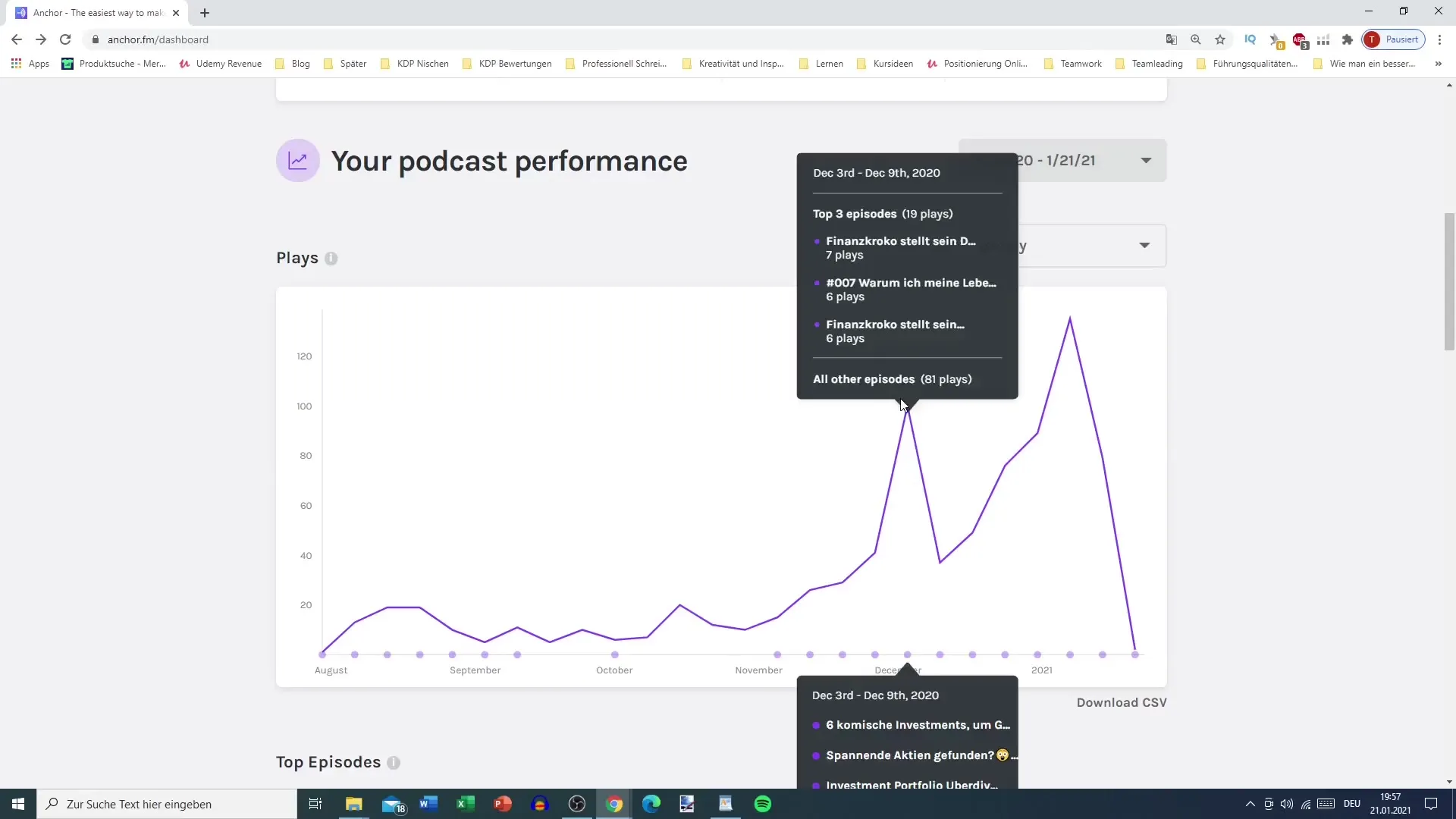
Step 3: Examine Episode Performance
Check which of your episodes have received the most plays. This information helps you identify which topics resonate with your audience. If a particular episode has performed well, consider producing similar content or delving deeper into the topic.
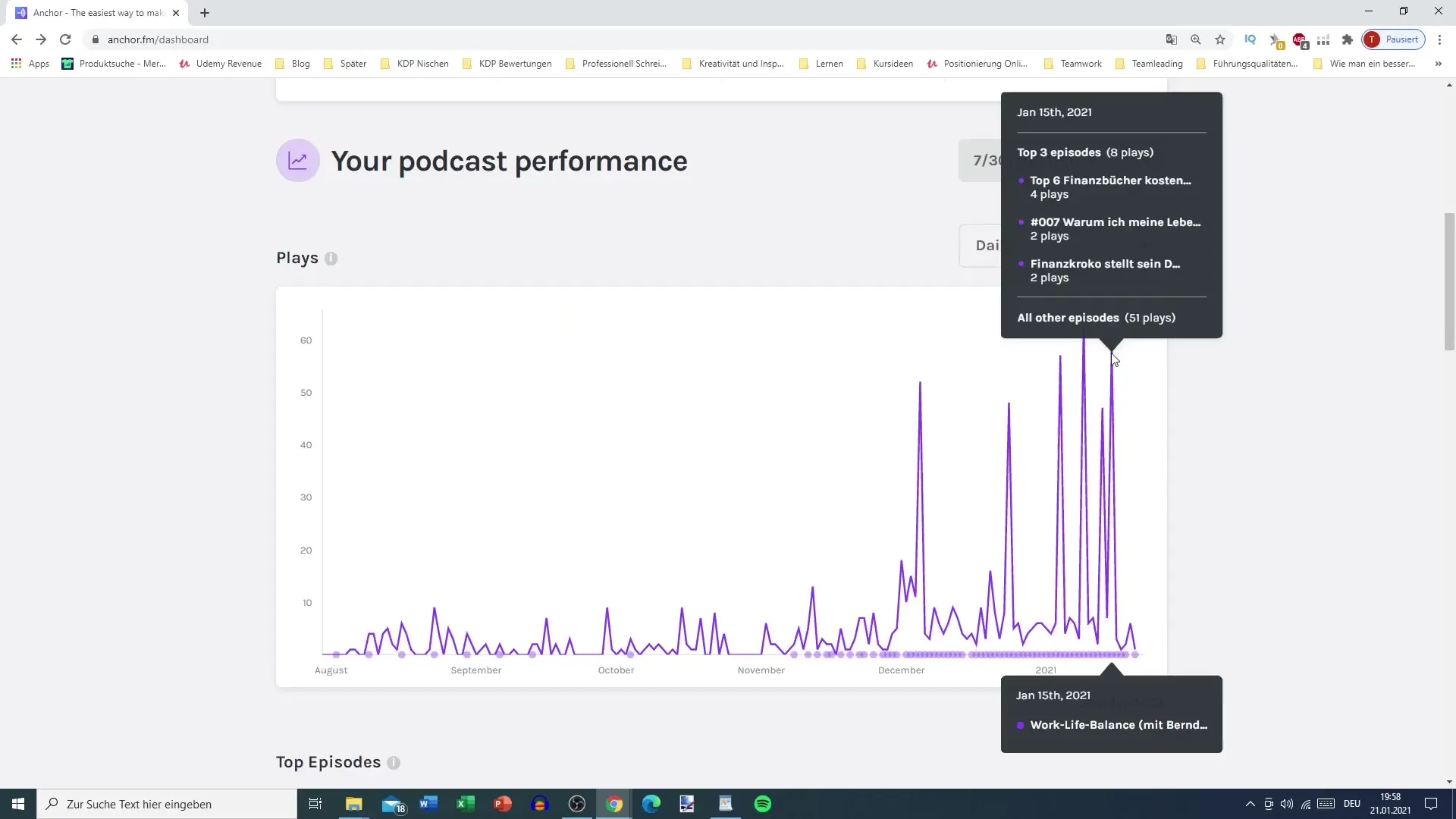
Step 4: Analyze Target Audience and Listener Statistics
Insights into the demographic data of your listeners are crucial. AnchorFM shows you the countries your listeners are from, as well as their age and gender. Use this information to tailor your content specifically to your primary audience and make any necessary adjustments.
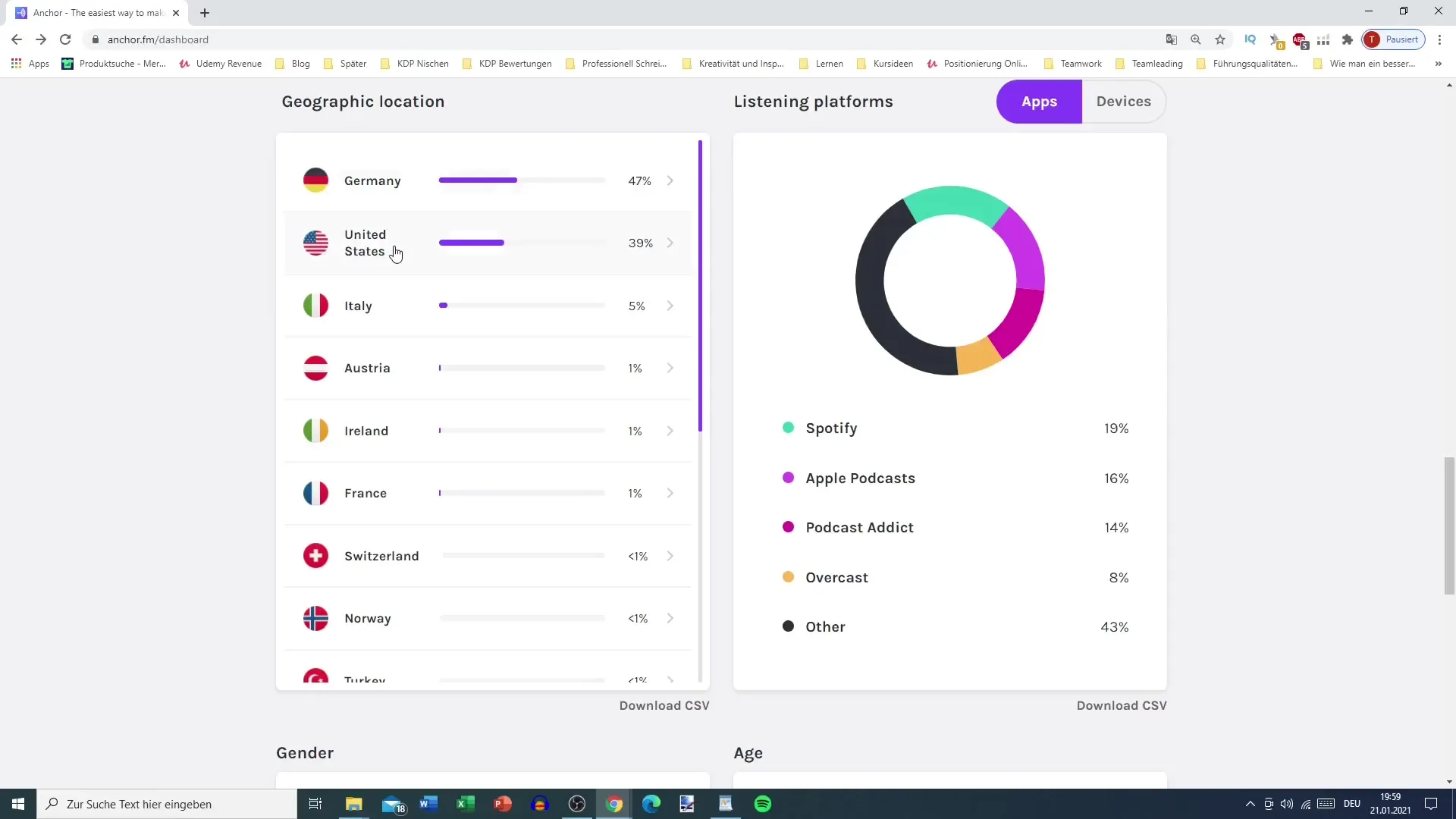
Step 5: Listener Platforms
Investigate on which platforms your podcast episodes are listened to. This shows you where to focus your marketing efforts. For example, if a large portion of your audience comes from Spotify, you may consider promoting more on that platform.
Step 6: Devices and Usage
See from which devices your episodes are accessed. This provides important information on whether you should optimize content for specific platforms and usage scenarios. If the majority of your listeners are on smartphones, a mobile-optimized experience could be beneficial.
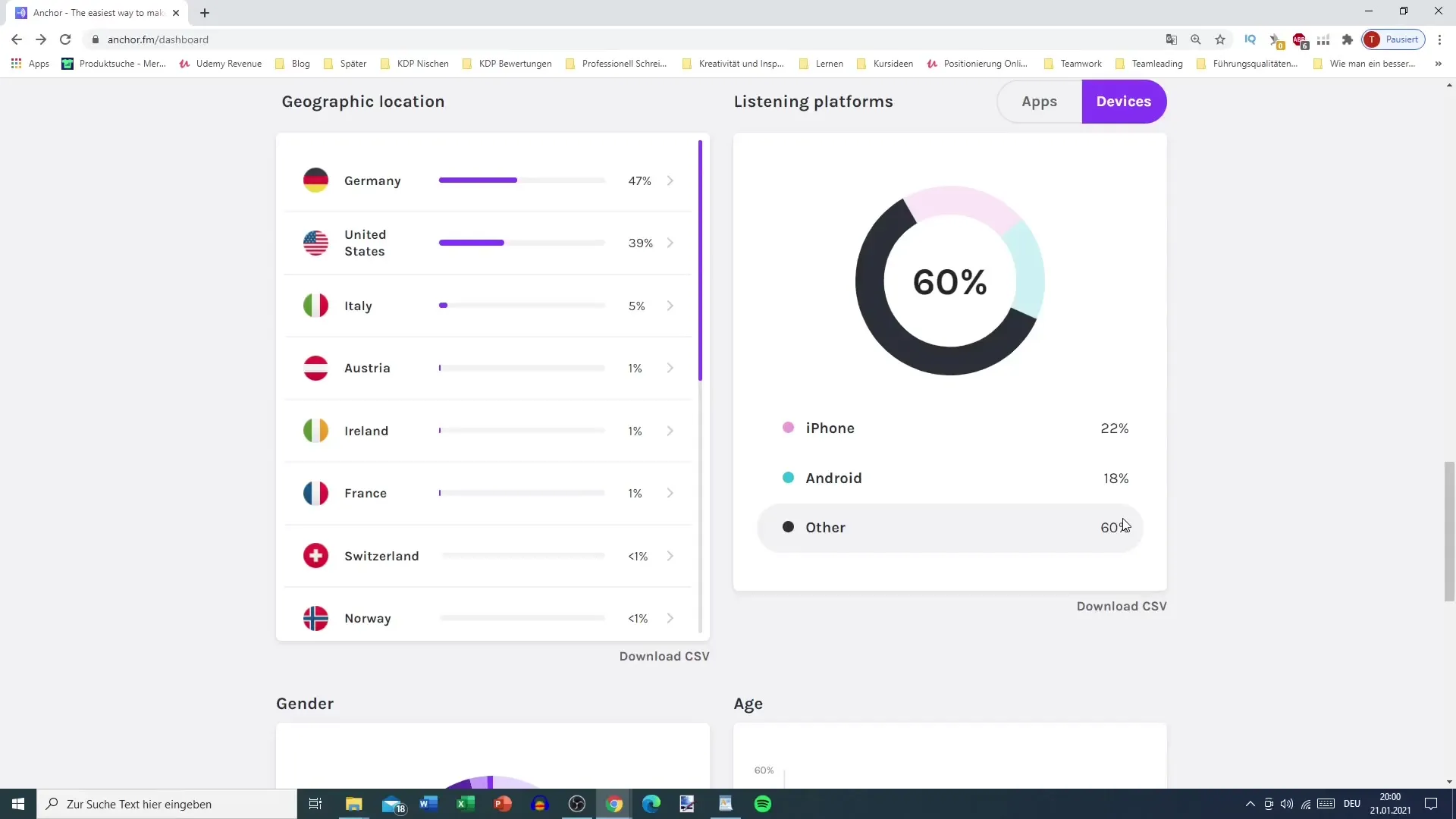
Step 7: Analyze Audience Engagement and Dropout Rate
Another important aspect is information on audience engagement. Pay attention to when and why listeners drop off. This data can give you clues on where content may need to be revised or structure changed to retain the audience longer.
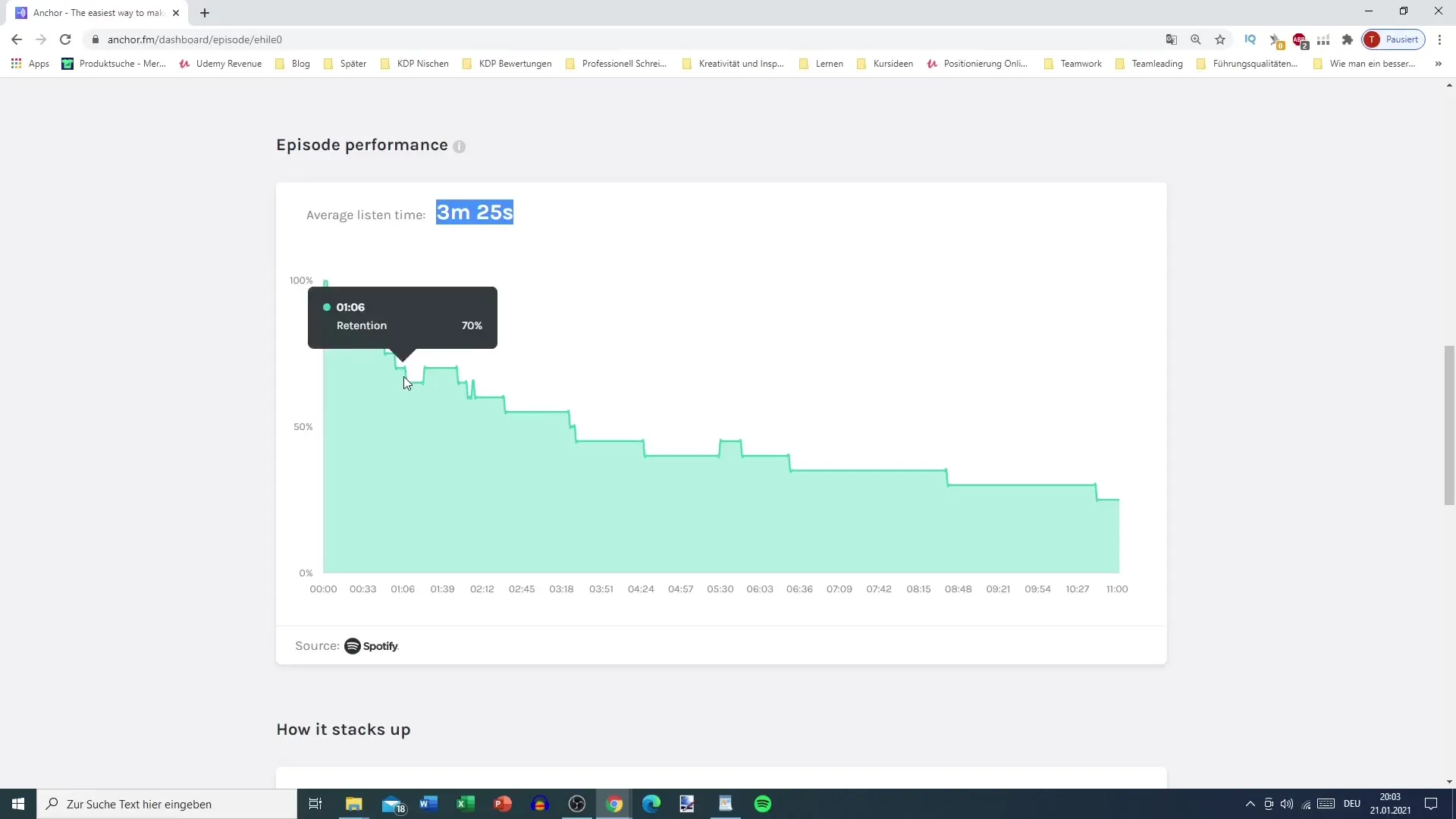
Step 8: Make Strategic Adjustments
Use the insights from your analysis to adapt the strategy for your podcast. If you find that frequent releases lead to more attention, reconsider your release schedule. Or perhaps certain topics have generated more engagement that you can address in further episodes.
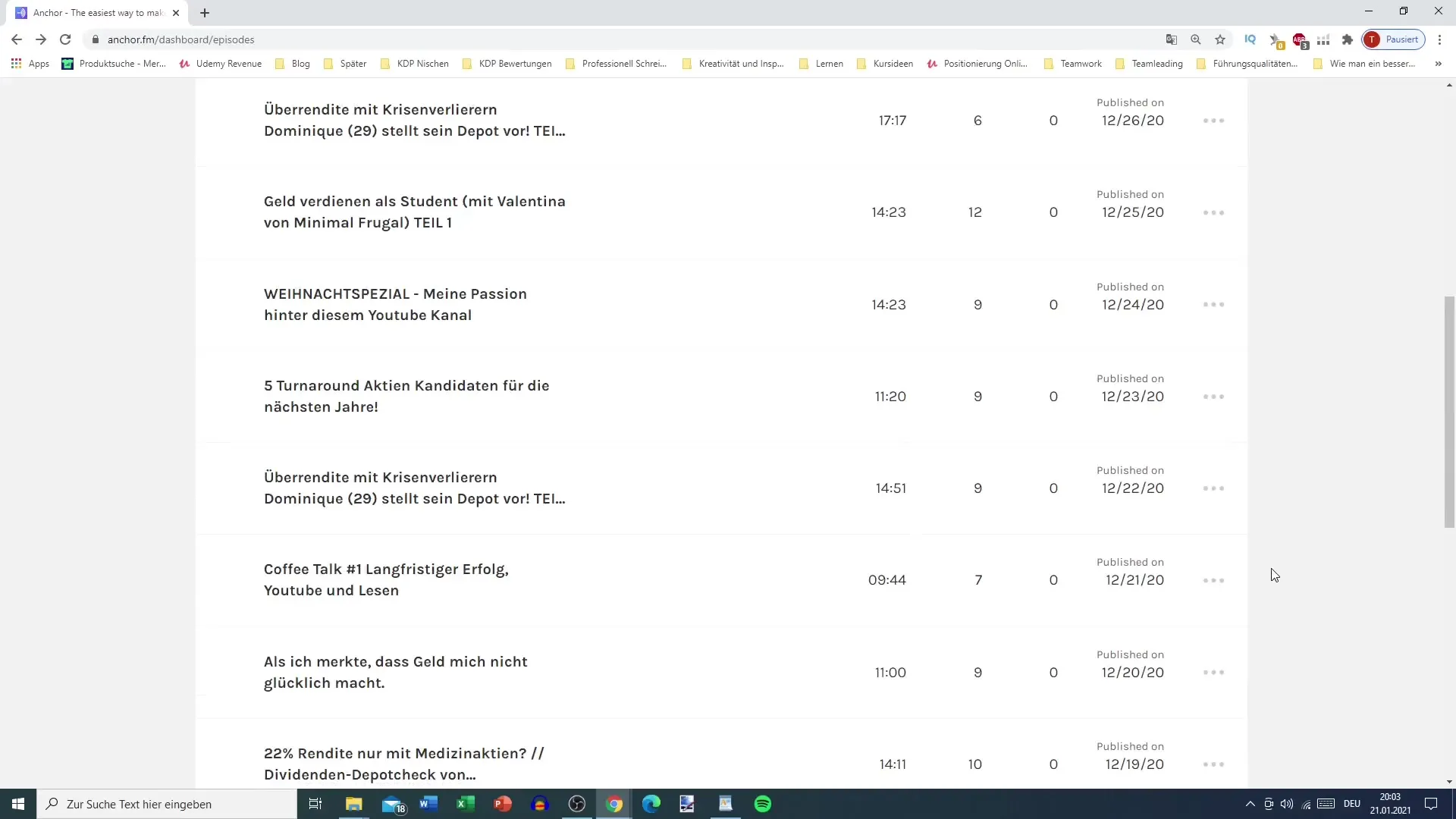
Step 9: Long-Term Planning and Monitoring
For long-term optimization of your podcast, constant monitoring of analytics is required. Plan regular checks of your data so that you can identify trends and changes in a timely manner. If necessary, communicate these analyses to your team or cooperation partners to facilitate strategic decision-making.
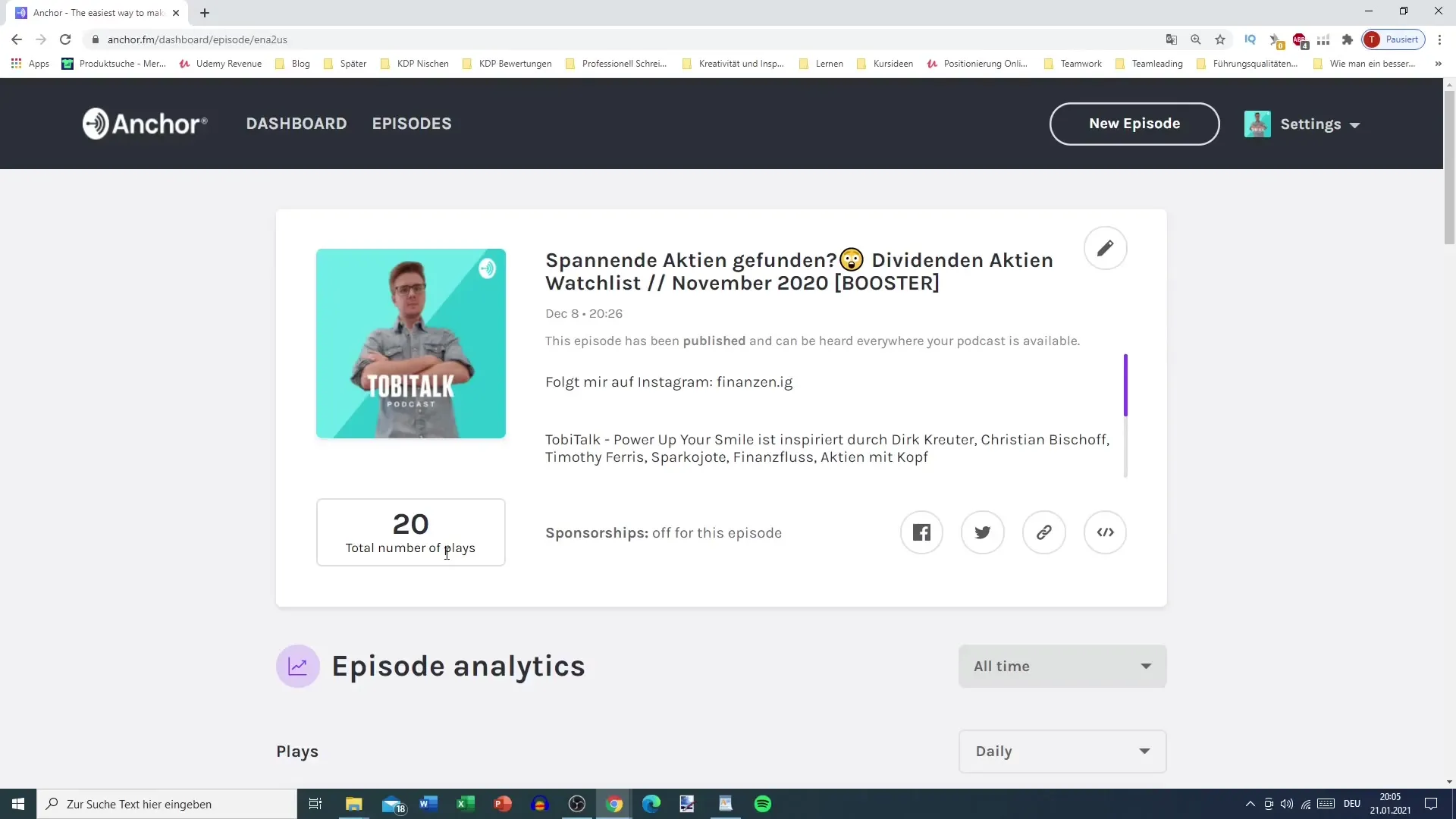
Summary
The goal of analyzing your podcast data is to identify patterns and continuously improve the quality of your content. Effectively handling AnchorFM's analytics provides you with the opportunity to enhance your podcast not only qualitatively but also quantitatively. With the right strategies and regular analyses, you can optimize your podcast and target your audience effectively.
Frequently Asked Questions
How often should I upload new content?Uploading three to four times a week is ideal for strengthening listener engagement and promoting consistent growth.
What can I do to increase my listener numbers?Analyze your most successful episodes and produce similar content to better serve your audience.
How can I identify where my listeners are coming from?AnchorFM analytics show you the geographical distribution of your listeners, allowing you to react accordingly.
Why is platform usage important?Understanding which platforms are most used helps you plan targeted marketing actions and promotions.
What to do if the average listening time is low?Analyze the dropout points in your episodes and optimize the content to keep listeners engaged longer.


